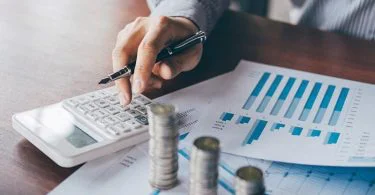Assessment and evaluation are interrelated yet distinct procedures in education, each serving a unique function. Assessment is the systematic process of collecting, analysing, and interpreting data to assess a learner’s knowledge, skills, and abilities. It is a continuous and ongoing process that focuses on comprehending the learning progression of an individual and identifying areas for improvement. Assessments may be formative (e.g., quizzes, discussions, or observations) or summative (e.g., final examinations or projects), and they provide both the learner and the educator with valuable feedback. This feedback assists with adapting instructional strategies, establishing learning objectives, and addressing individual requirements.
On the other hand, evaluation is a broader process that entails making judgements or decisions regarding the quality, efficacy, and value of an educational programme, course, or teaching method. Evaluations involve comparing the outcomes of a programme to predetermined objectives or criteria, which are essential for determining a program’s success and guiding future enhancements. Evaluations can be conducted on various levels, including curriculum, instruction, and student performance. They can be qualitative and quantitative and may involve internal or external stakeholders. Evaluation is concerned with determining the overall efficacy and value of educational programmes, courses, or teaching methods, whereas assessment focuses on measuring individual learner progress and providing feedback for improvement. Both procedures are necessary to ensure the educational experience’s success and promote continuous improvement.
What is Assessment?
Assessment is an essential part of the learning process. It involves collecting, analysing, and interpreting data in a structured way to measure a learner’s knowledge, skills, and abilities. The main goal of assessment is to find out how well someone is learning and where they need to improve or have mastered something. By looking at a learner’s success, teachers can change their teaching methods, set realistic learning goals, and meet each student’s needs. There are two main kinds of assessment: formative and final. Formative assessments always happen during the learning process, so comments and changes can be made immediately. Quizzes, conversations, observations, and self-evaluations are all kinds of formative assessments. These tests help teachers figure out where a student might be having trouble and give them a chance to help them in a specific way.
On the other hand, summative assessments happen at the end of a learning period or unit and are meant to test how well a learner understands the information. Final examinations, projects, and presentations are all examples of summative assessments. These assessments give a complete picture of how well a student did and can be used to provide grades or measure progress towards learning goals. Ultimately, assessment is an essential tool for promoting learning and growth. It gives teachers useful information about a student’s development and helps them decide how to teach and help. Using formative and summative tests, teachers can get a complete picture of students’ strengths and areas where they need to improve.
What is Evaluation?
Evaluation is an essential part of education. It is the process of systematically looking at and judging the quality, efficiency, and value of programmes, courses, or ways of teaching. The main goal of evaluation is to figure out how well a programme or course worked and use that information to make changes or make decisions in the future. Evaluation can be done on many levels, such as the curriculum, the teacher, or the learner’s performance. It includes comparing the results to goals, standards, or benchmarks already set. Evaluations can be both qualitative and quantitative. Qualitative evaluations focus on the experiences, views, and opinions of stakeholders. Quantitative evaluations look at data and results that can be measured.
Internal stakeholders like teachers, students, and managers, as well as external stakeholders like parents, members of the community, or experts in the field, can be involved in evaluations. These evaluations can be formative, giving comments on how to improve the programme or course, or summative, providing a complete picture of the programme or course at the end. Surveys, interviews, focus groups, and data analysis are evaluation tools. These methods help to find the program’s or course’s strengths, weaknesses, chances, and threats. This makes it easier to make decisions and develop ways to improve based on facts. In short, evaluation is essential in ensuring that educational programmes, courses, and teaching methods are high-quality and valuable. Evaluations support continuous growth and well-informed decision-making by systematically reviewing and rating different education parts. In the end, this makes learning better for everyone.
Difference Between Assessment and Evaluation
While assessment and evaluation play essential roles in education, they do so in slightly different ways. Using formative and summative techniques, assessment determines how much a student has learned. It takes into account each learner’s unique situation and goals before tailoring its approach to them. Contrarily, evaluation refers to a more generalised procedure for assessing the merits of various pedagogical strategies, such as courses or programmes. It is crucial for making decisions and leading improvements, and it entails comparing outcomes to objectives or standards. Assessment focuses on the development of the student, whereas evaluation analyses the efficacy and worth of the programme as a whole. The key differences between assessment and evaluation are laid out here.
Purpose
Evaluation judges the quality, efficacy, and usefulness of educational programmes, courses, or teaching methods. In contrast, assessment is the process of measuring a learner’s knowledge, skills, and capacities.
Focus
Evaluation looks at how well a programme or course is as a whole, while assessment focuses on how each student is doing.
Timing
Assessment occurs continuously during the learning process, while evaluation is done at predetermined checkpoints or the end of the programme or course.
Feedback
The results of an assessment can guide instruction and help students grow, while the findings of an evaluation can help with planning and decision-making for the programme as a whole.
Methods
Formative and summative assessments (like quizzes and tests) are used in assessment, while various qualitative and quantitative approaches (like interviews and data analysis) are used in evaluation.
Objectives
Comparatively, evaluation seeks to ascertain whether or not a programme or course achieves its intended goals and standards, whereas assessment aims to discover areas for student improvement or mastery.
Stakeholders
Evaluation can engage a broader stakeholder group than assessment, including administrators, parents, and community members.
Scope
Evaluation looks at a broader range of factors, including curriculum, instruction, and student achievement, whereas assessment focuses on a more focused set of goals.







